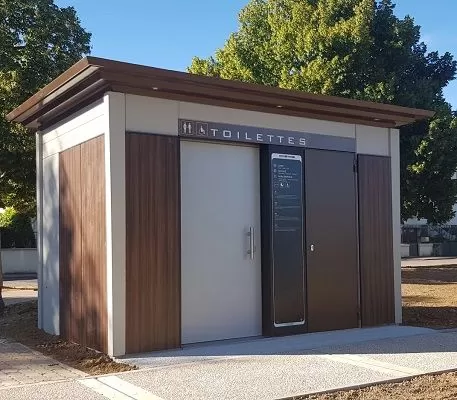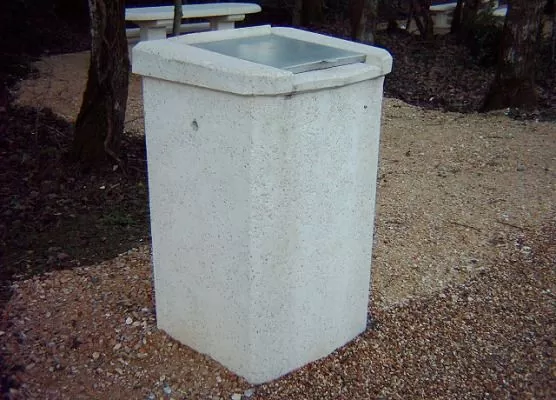Public spaces and their facilities are communal assets. They must be accessible to all users, whatever their travel constraints. For persons with reduced mobility (PRM) this means being able to move freely from one place to another and to access all services offered by the community.
What is accessible design ?
“Accessible"" facilities are designed and installed in such a way that users can use them autonomously. This criterion is key, and requires that each facility be analysed in its surroundings.
Let's look at the example of an access ramp for PRM users at the entrance to a public establishment. When renovating existing buildings it is not always technically feasible to install permanent installations.
If temporary facilities are available the user must be able to indicate his/her presence and request that the ramp be fitted. We must therefore anticipate the signs we will need and, if necessary, the staff required to perform these services.
Current regulations
The accessibility of roads and public spaces is governed by the Law of February 11, 2005, the Decrees of December 21, 2006 and the Order of January 15, 2007.
Article 45 of the 2005 Law specifies that the entire “chain of travel” to public spaces must be accessible.
For local authorities it is not just a question of installing compliant facilities, they must also ensure that traffic flows smoothly between the various facilities. They must also make sure that users with reduced mobility can remain autonomous.
More specifically, the legislative text refers to a chain of travel which comprises buildings, roads, public spaces and their amenities, as well as public transport networks and intermodal platforms. Said infrastructure must be connected in such a way as to guarantee freedom of movement in the public space for persons with reduced mobility.
The necessary resources must be implemented according to the plan governing the accessibility of roads and public spaces (PAVE).
PAVE is aimed at municipalities with more than 1,000 residents. It is compulsory to establish and implement this plan, though it may be subsidized under certain conditions.
Accessibility also applies to establishments open to the public, such as restaurants and hotels. Accommodation establishments, for example, must offer PRM shower cubicles and, more generally, rooms that are large enough to handle wheelchairs.
Examples of recommendations
Here are just a few examples of current regulatory recommendations for the design of public spaces to make them accessible for persons with reduced mobility.
Ramp gradients
To enable PRM users to move around freely, ramps should be provided instead of stairs. These flat surfaces enable height changes to be negotiated without steps, they must have a gradient of less than 5%. Above 4%, there must be rest areas at the top and bottom of each inclined surface. Long ramps must have flat rest areas at 10-metre intervals.
Widths of traffic lanes
Public footpaths must be at least 1.40 m wide and free of obstacles. Obstacles can include street furniture. For example, if a path is exactly 1.40 m wide, installing a litter bin would make it inaccessible. The same principle applies to PRM toilets with the correct dimensions, but which encroach onto a path.
In historic districts with little room for manoeuvre, it is sometimes not possible to install toilets which are accessible to persons with reduced mobility. However, these facilities must be made available to users as soon as is technically feasible. In these cases the location of the nearest PRM toilet must be clearly indicated on prefabricated outdoor toilets that do not meet PRM standards.
Francioli’s PRM-compliant products for public spaces
Francioli, a specialist in public amenities, designs high-quality ranges of public toilets and street furniture for local authorities.
Public toilets
Francioli offers PRM toilets that are easy to access and can be customized to integrate perfectly into the urban landscape.
Francioli's range of PRM-compliant toilets has been designed to offer local authorities high-quality, economical, functional and aesthetic alternatives for all types of urban spaces.
Francioli's range of PRM-compliant outdoor toilets can be installed in gardens, rest areas and motorway rest areas.
These toilet units offer greater accessibility both from the outside and the inside and comply with the dimensional requirements for PRM WCs. Reduced-mobility users benefit from a special floor surface and equipment which has been especially designed and laid out to offer maximum convenience.
Urban furniture
With Francioli’s help, local authorities can create street furniture that is highly accessible and complies with the current PRM standards.
Our designer furniture includes benches, chairs with arms and street furniture sets, all made in France and with fire-resistant concrete structures (M0 classification).
Accessible and long-lasting, they are also easy to maintain, helping to reduce long-term costs.
Francioli also offers street furniture elements which can be used to demarcate parking spaces and pedestrian zones. These include concrete bollards and hard-wearing planters, which local authorities can use to enhance public spaces while providing indications.




